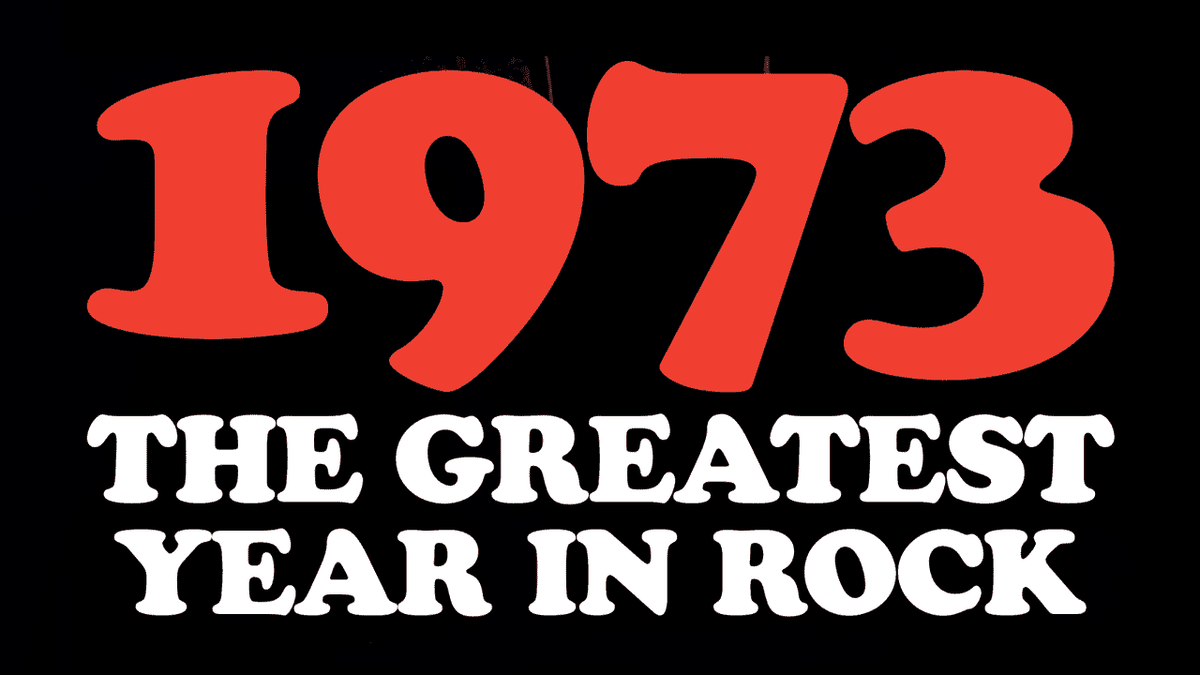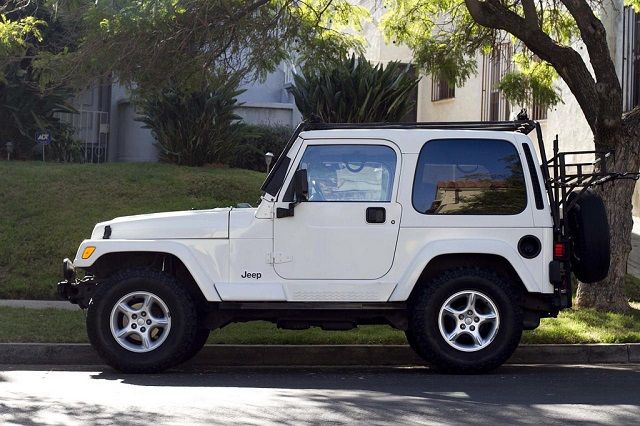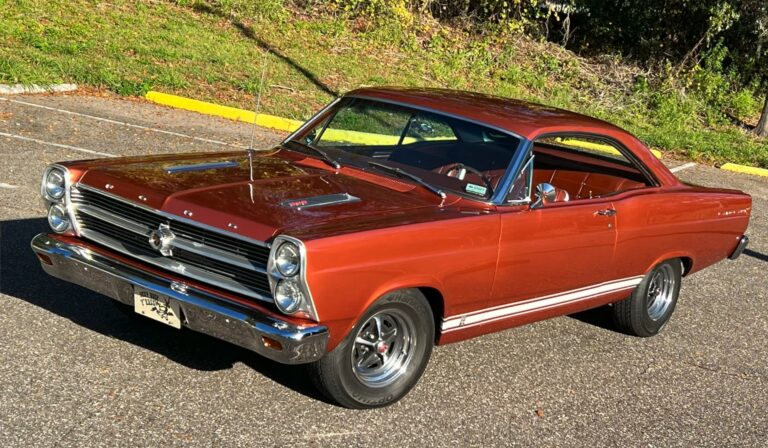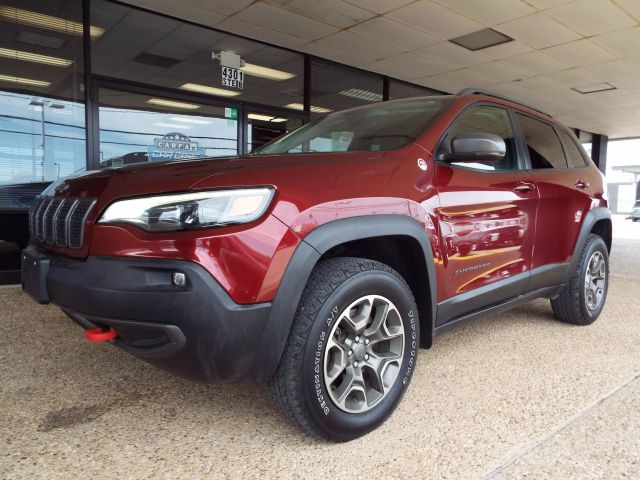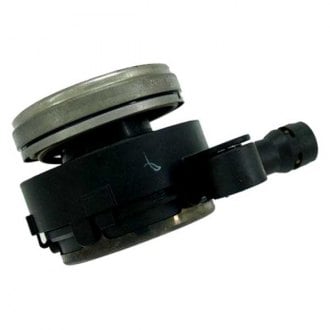1973 Jeep CJ5 For Sale: A Comprehensive Buyer’s Guide
1973 Jeep CJ5 For Sale: A Comprehensive Buyer’s Guide /jeeps.truckstrend.com
The 1973 Jeep CJ5 stands as a quintessential icon of American automotive history, representing a golden era of rugged simplicity and unparalleled off-road capability. More than just a vehicle, it’s a symbol of freedom, adventure, and a testament to enduring design. For enthusiasts and collectors alike, finding a 1973 Jeep CJ5 for sale isn’t merely a transaction; it’s an opportunity to acquire a piece of heritage, a blank canvas for customization, or a ready-to-rumble classic off-roader. This article serves as a comprehensive guide for anyone considering diving into the rewarding world of owning this legendary machine.
I. Why the 1973 Jeep CJ5 Still Captivates
1973 Jeep CJ5 For Sale: A Comprehensive Buyer’s Guide
The 1973 model year holds a unique place in the CJ5 lineage. It falls within the "intermediate" generation, produced by AMC (American Motors Corporation), just before the introduction of the longer CJ-7. This specific year benefited from AMC’s engine offerings, providing more robust and powerful options than earlier models.
Its enduring appeal stems from several key factors:
- Historical Significance: It represents a pivotal moment in Jeep’s evolution, blending classic "flat-fender" aesthetics with more modern powertrains.
- Rugged Simplicity: The CJ5’s design is inherently utilitarian. There are no complex electronics, just robust mechanicals designed to conquer challenging terrain. This simplicity also makes it relatively easy for the home mechanic to work on.
- Iconic Styling: With its short wheelbase, open-air design, removable doors, fold-down windshield, and round headlights, the 1973 CJ5 embodies the quintessential Jeep look that has captivated generations.
- Off-Road Prowess: Its compact dimensions, short wheelbase, and solid axles (often Dana 30 front and Dana 44 rear) make it incredibly agile and capable on trails, even by modern standards.
- Customization Potential: The CJ5 is a beloved platform for modification, from mild upgrades to extreme rock crawlers, allowing owners to tailor the vehicle to their specific needs and desires.

II. Key Features and Specifications of the 1973 CJ5
Understanding the factory specifications of the 1973 CJ5 is crucial when evaluating a vehicle for sale. While many will have been modified over the decades, knowing the original setup helps in assessing the quality and intent of any changes.
- Engine Options:
- AMC 232 I6: A reliable inline-six, offering decent torque for its size.
- AMC 258 I6: The more common and highly regarded inline-six, known for its longevity and ample low-end torque, making it ideal for off-road use.
- AMC 304 V8: A popular and powerful V8 option, providing significant horsepower and torque, though at the expense of fuel economy.
- Transmission:
- T-14 (3-speed manual): Standard with the 232 I6.
- T-15 (3-speed manual): Often paired with the 258 I6 and 304 V8, a robust heavy-duty transmission.
- TH400 (automatic): A durable GM-sourced automatic transmission, available with the V8.
- Transfer Case:
- Dana 20: A strong, gear-driven transfer case known for its reliability and direct power transfer.
- Axles:
- Front: Typically a Dana 30.
- Rear: Often a Dana 44, especially with the V8 option, known for its strength.
- Suspension: Leaf springs all around, providing a robust but somewhat stiff ride.
- Brakes: Drum brakes on all four wheels were standard, though many have been upgraded to front disc brakes.
- Body: Steel body tub, removable doors, soft top or hard top options, and a fold-down windshield. The interior is famously spartan and functional.
III. What to Look For When Buying a 1973 Jeep CJ5
Acquiring a vintage vehicle like the 1973 CJ5 requires a meticulous inspection. These vehicles are nearly 50 years old, and their condition can vary wildly.
- Rust: The Ultimate Enemy: This is paramount. Inspect every inch of the frame, especially around the spring hangers, cross members, and steering box mounts. Check the body tub thoroughly: floorboards, rocker panels, rear quarter panels, and the area around the windshield frame. Surface rust is manageable, but widespread or structural rust can be a deal-breaker or a very expensive repair.
- Drivetrain Condition:
- Engine: Listen for strange noises (knocks, ticks), look for excessive smoke from the exhaust (blue for oil, white for coolant), and check for oil or coolant leaks.
- Transmission & Transfer Case: Test all gears. Manual transmissions should shift smoothly without grinding. Automatics should engage positively. Check for leaks. Ensure the 4WD engages and disengages properly in both high and low range.
- Axles: Look for leaks around the differential covers and axle seals. Check for excessive play in the universal joints and axle shafts.
- Steering and Suspension: Check for worn tie rod ends, ball joints, and steering box play. Excessive play can lead to the infamous "death wobble." Inspect leaf springs for sagging or broken leaves, and shocks for leaks.
- Electrical System: Original wiring can be brittle and problematic. Test all lights, gauges, wipers, and the horn. Look for signs of amateur wiring jobs.
- Documentation: A clear title is non-negotiable. Service records, if available, can provide valuable insight into the vehicle’s history and maintenance.
- Modifications: Many CJ5s have been modified. Assess the quality of any aftermarket parts, lift kits, or engine swaps. Well-done modifications can enhance value and performance, but poorly executed ones can be a costly headache.
- Test Drive: Always drive the vehicle. Pay attention to how it starts, idles, accelerates, shifts, brakes, and steers. Listen for unusual noises and feel for vibrations.
IV. Types of 1973 CJ5s on the Market and Their Value
The price of a 1973 CJ5 varies significantly based on its condition, originality, and any modifications.
- Project Vehicles: These are typically non-running or require extensive mechanical and body work. They are the most affordable but demand significant time, money, and expertise.
- Driver Quality: These CJs are running, driving, and generally safe, but may have cosmetic flaws, minor mechanical issues, or older modifications. They are suitable for immediate use but will likely require ongoing maintenance and improvements.
- Restored/Show Quality: These vehicles have undergone professional restorations, often to original specifications or to a very high standard. They command the highest prices and are typically ready for shows or weekend cruises.
- Heavily Modified/Custom Builds: These are vehicles that have been extensively altered for specific purposes (e.g., rock crawling, overland travel). Their value depends heavily on the quality of the components used and the professionalism of the build.
V. Owning and Maintaining a 1973 CJ5
Owning a vintage Jeep is a commitment, but a rewarding one.
- Maintenance: The mechanical simplicity of the CJ5 makes basic maintenance relatively straightforward for those with some DIY skills. Regular oil changes, lubrication of components, and fluid checks are essential.
- Common Issues: Be prepared for rust (even on restored vehicles if not properly maintained), carburetor tuning challenges (especially with ethanol fuels), and potential electrical gremlins due to aging wiring. Steering play and "death wobble" are also common issues that can often be resolved with suspension and steering component upgrades.
- Parts Availability: While some specific original parts can be challenging to find, the aftermarket support for CJ Jeeps is robust. Most mechanical and many body components are readily available through specialist suppliers.
- Upgrades: Many owners opt for modern upgrades to improve drivability and safety:
- Power Steering: Significantly reduces steering effort.
- Disc Brakes: Greatly improves stopping power.
- Fuel Injection Conversion: Replaces the carburetor for better reliability, starting, and fuel economy.
- Suspension Lifts: Common for increased ground clearance and larger tires.
- Community: The Jeep CJ community is vast, passionate, and incredibly helpful. Online forums, local clubs, and social media groups are excellent resources for advice, parts, and camaraderie.
- Insurance: Consider classic car insurance, which often offers better rates and agreed-upon value coverage for vintage vehicles.
VI. The Buying Process: Tips for a Smooth Transaction
- Research Market Values: Use online classifieds, auction sites, and enthusiast forums to get a sense of current market prices for different conditions.
- Pre-Purchase Inspection (PPI): If possible, have a qualified mechanic specializing in vintage 4x4s or Jeeps inspect the vehicle before purchase. This small investment can save you from costly surprises.
- Negotiation: Don’t be afraid to negotiate, especially if you’ve identified areas needing repair.
- Test Drive: A thorough test drive is non-negotiable. Drive it on various surfaces if possible, including some rough terrain if the seller allows.
- Paperwork: Ensure the seller has a clear title in their name and that all vehicle identification numbers (VINs) match the documentation.
Estimated Price Guide for 1973 Jeep CJ5 For Sale
The following table provides a general price range for 1973 Jeep CJ5s based on their condition. Prices can fluctuate based on location, originality, engine type (V8s often command a premium), and specific modifications.
| Condition/Type | Low End Price (USD) | High End Price (USD) | Description |
|---|---|---|---|
| Project Vehicle | $3,000 | $8,000 | Non-running, significant rust, major mechanical issues, requires full restoration. |
| Driver Quality | $8,000 | $18,000 | Running and driving, safe, but with cosmetic flaws, minor mechanical needs, or older modifications. |
| Good Condition | $18,000 | $25,000 | Well-maintained, minimal rust, solid mechanics, presents well but not necessarily show-quality. |
| Restored/Show | $25,000 | $45,000+ | Professionally restored to original or very high standards, excellent cosmetic and mechanical condition. |
| Custom Build | $15,000 | $50,000+ | Highly modified for specific purposes (e.g., rock crawler, overland), value depends on quality of build. |
Note: These are estimates. Market conditions, rarity of specific features, and regional demand can influence actual sale prices.
Frequently Asked Questions (FAQ)
Q: Is the 1973 CJ5 reliable?
A: With proper maintenance and attention to common vintage vehicle issues, a 1973 CJ5 can be quite reliable. Its mechanical simplicity means fewer complex systems to fail, but regular upkeep is essential.
Q: What’s the fuel economy like?
A: Not great. Expect anywhere from 10-15 MPG, depending on the engine (V8s will be on the lower end), gearing, and driving style. These vehicles were not designed for efficiency.
Q: Can it be a daily driver?
A: While some enthusiasts do daily drive them, the 1973 CJ5 is generally not ideal for daily commuting. It lacks modern safety features, comfort, and refinement. It’s best suited as a weekend cruiser, off-road vehicle, or fair-weather fun machine.
Q: Are parts hard to find for a 1973 CJ5?
A: No, for most mechanical and common body parts, the aftermarket support is excellent. There are many online retailers and specialist shops dedicated to vintage Jeeps. Some very specific original trim pieces might be harder to source.
Q: What is "death wobble"?
A: "Death wobble" is a violent, uncontrolled shaking of the front end of a solid-axle vehicle, often triggered by hitting a bump at speed. It’s a common issue with older Jeeps that can be resolved by replacing worn steering and suspension components, ensuring proper alignment, and sometimes adding a steering stabilizer.
Q: What’s the best engine for a 1973 CJ5?
A: The AMC 258 I6 is widely considered the best balance of power, reliability, and fuel economy for a CJ5. The AMC 304 V8 offers more power but comes with increased fuel consumption.
Concluding Summary
The 1973 Jeep CJ5 is more than just a classic vehicle; it’s a piece of Americana, offering a unique blend of heritage, rugged capability, and a truly engaging driving experience. For those seeking a vehicle that stands apart, offers endless customization possibilities, and connects them to a vibrant community, the 1973 CJ5 is an exceptional choice.
However, the journey to ownership requires diligence. Thorough inspection, understanding the vehicle’s condition, and realistic expectations regarding maintenance and potential upgrades are crucial. Whether you’re looking for a meticulously restored showpiece or a challenging project, the timeless appeal of the 1973 Jeep CJ5 ensures that for the right buyer, it’s not just a purchase, but the beginning of an enduring adventure.
